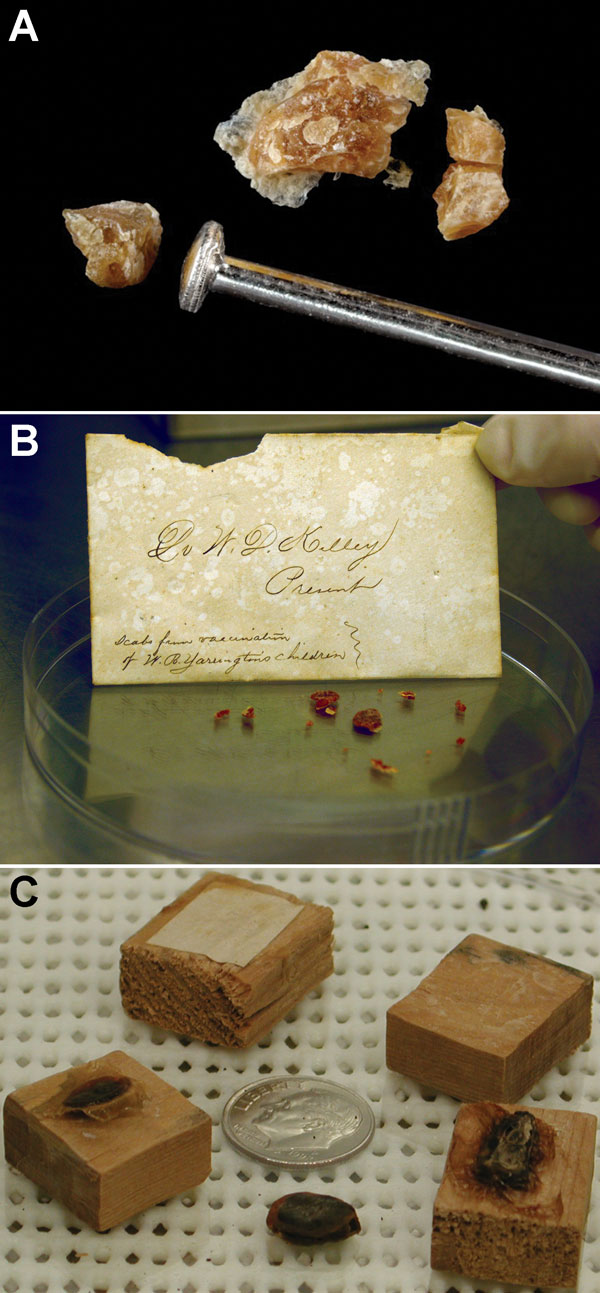Volume 20, Number 2—February 2014
Synopsis
Poxvirus Viability and Signatures in Historical Relics
Figure 3

Figure 3. Recovered crustsA) Lesion crust material from Virginia, USA, photographed after gamma irradiationPhotograph by James GathanyB) Lesion crust material from an envelope contained within a book, New Mexico, USA, nineteenth centuryPhotograph by Russell LRegneryC) Lesion crust material from a jar on display in a museum, Arkansas, USAPhotograph provided by Erin Goldman.
Page created: January 15, 2014
Page updated: January 15, 2014
Page reviewed: January 15, 2014
The conclusions, findings, and opinions expressed by authors contributing to this journal do not necessarily reflect the official position of the U.S. Department of Health and Human Services, the Public Health Service, the Centers for Disease Control and Prevention, or the authors' affiliated institutions. Use of trade names is for identification only and does not imply endorsement by any of the groups named above.